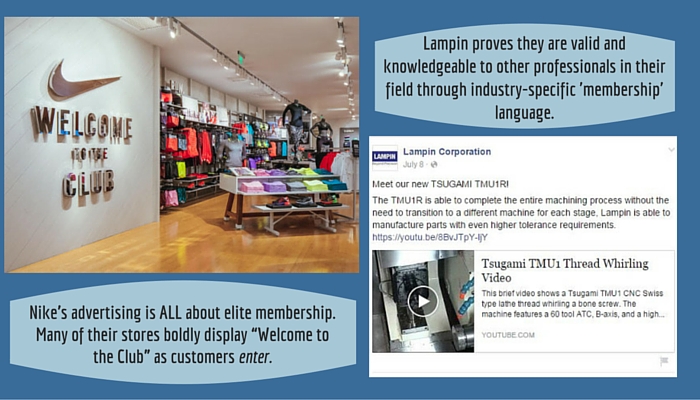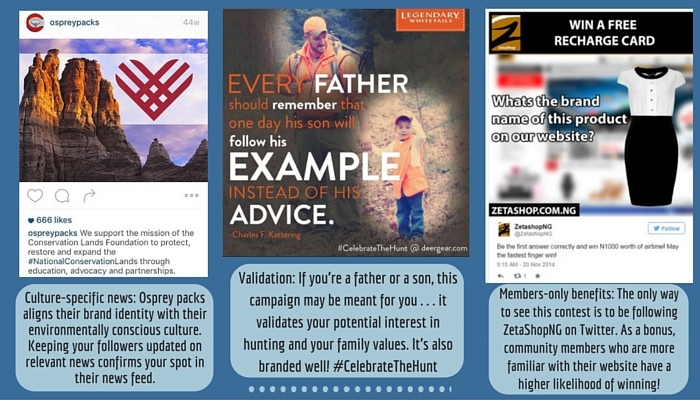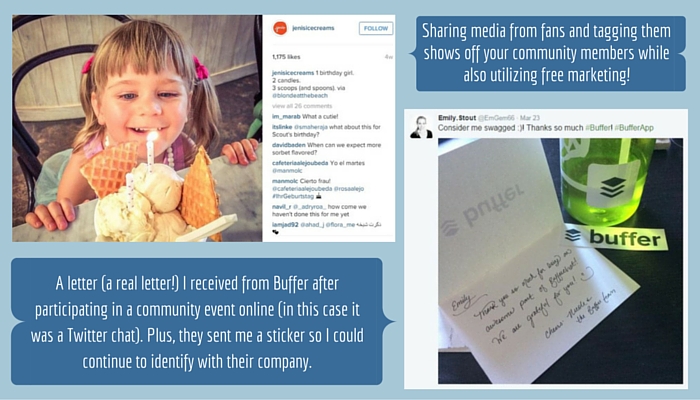“A community is made up of intimate relationships among diversified types of individuals—a kinship group, a local group, a neighborhood, a village, a large family.”
—Carroll Quigley
The far reach of the Internet is rapidly changing our world’s definition of community. Boards on Pinterest, groups on Twitter, profiles on Instagram, and business pages on Facebook have the power to link people from all around the world. No longer is community limited by geography. With social media, people are able to join multiple communities and advertise community associations to friends and followers by simply clicking “Like.”
But why do we want to participate in social media at all? Why do we have this intrinsic desire to be a part of a group, to speak up on chat boards, and to associate ourselves with a community? Not surprisingly, the answer lies in psychology. Specifically, we’re talking about community psychology—the study of why people seek out communities and how membership in a community can affect an individual.
Now, not only do we social media managers have to create, maintain, and grow communities, we have to do it online with type and graphics as our only tools! By implementing the three key elements of psychology, we can build stronger online communities for our brands, businesses, and interest groups.
MEMBERSHIP
“There is a community of the spirit. Join it, and feel the delight of walking in the noisy street and being the noise.”
—Rumi
People seek out communities to have a sense of belonging and to solidify their identities. So, identify the types of people that will join your community—seek them out and make it clear what your brand stands for and what kind of people use your brand.
When developing your brand, speak the language of your desired members and maintain exclusivity. If your community is selling to Millennials, use funny hashtags or trending topics to prove that this is a community for them. If you are a contract manufacturing company, like this one, don’t be afraid to use technical, “engineer-only” language on your page to deter those who don’t identify with engineering. Demonstrating elements of exclusivity throughout your social media develops your brand and draws only the people you want into your community.
WORTH
“The manner of giving is worth more than the gift.”—Pierre Corneille
The main reason businesses are on social media is because they have a product or service they think will solve people’s problems . . . and they want to sell it. This is not the best way to approach social media. What you’re selling is not the most important element of your brand.
In fact, your social media community should focus on the culture of its members. What content is relevant to your exclusive community? Meet the needs of your community by sharing culture-specific news, providing needed information, giving member-only benefits, or validating lifestyles.
CONNECTION
“In most vital organizations, there is a common bond of interdependence, mutual interest, interlocking contributions, and simple joy.”
—Max DePree
What made you want to have a personal Facebook profile in the first place? It probably wasn’t to see what your neighborhood grocery store had on sale that week or to see who Taylor Swift was talking to. It was to connect to your friends (and maybe family, if you’re brave). It was to creep on your friend’s new boyfriend who went to an out-of-state college. It was to allow your extended family to compare your achievements to their kids achievements (just kidding). Social media began as a way to connect real people with other real people. In order to be successful, businesses and brands need to follow that same philosophy.
As social media managers, our job is to shape the community for our members. You can remind people of relevant global stories and shared interests or create your own stories. When you reach a business milestone, share it and give ownership to the people who made it happen! This could be as simple as saying “thank you for participating” or highlighting members’ accomplishments as they relate to your product. Build a sense of membership identity that applies to your community and reiterate the fact that “we’re all in this together.”
Shared experience is “the definitive element for true community.” If you can connect your members and make each one feel like an active participant in your community, you will be successful on social media. But how is this possible? While we’ve gone over a few examples (and you can see even more content marketing examples here), the best thing to remember is that you are a human talking to other humans. You aren’t really a brand or a business. At the end of the day, we are all looking for the same thing: a real, honest connection.
Now that you have some insight into the psychology of a successful community and have seen some brand examples, how will you implement them in your social media communities? Is there an area in which you could be doing better? Take some time and try to find examples in your social platforms that align with the tools I’ve mentioned. I’d love to see how you incorporate these strategies. Tweet me a screenshot of a post you’re proud of (@AppInteractive or @EmGem66)! I know I’ve only just scratched the surface of the relationship between social media and community psychology, so if you have additional ideas or information, please feel free to connect with me on Twitter or send me an email (see author bio)!




